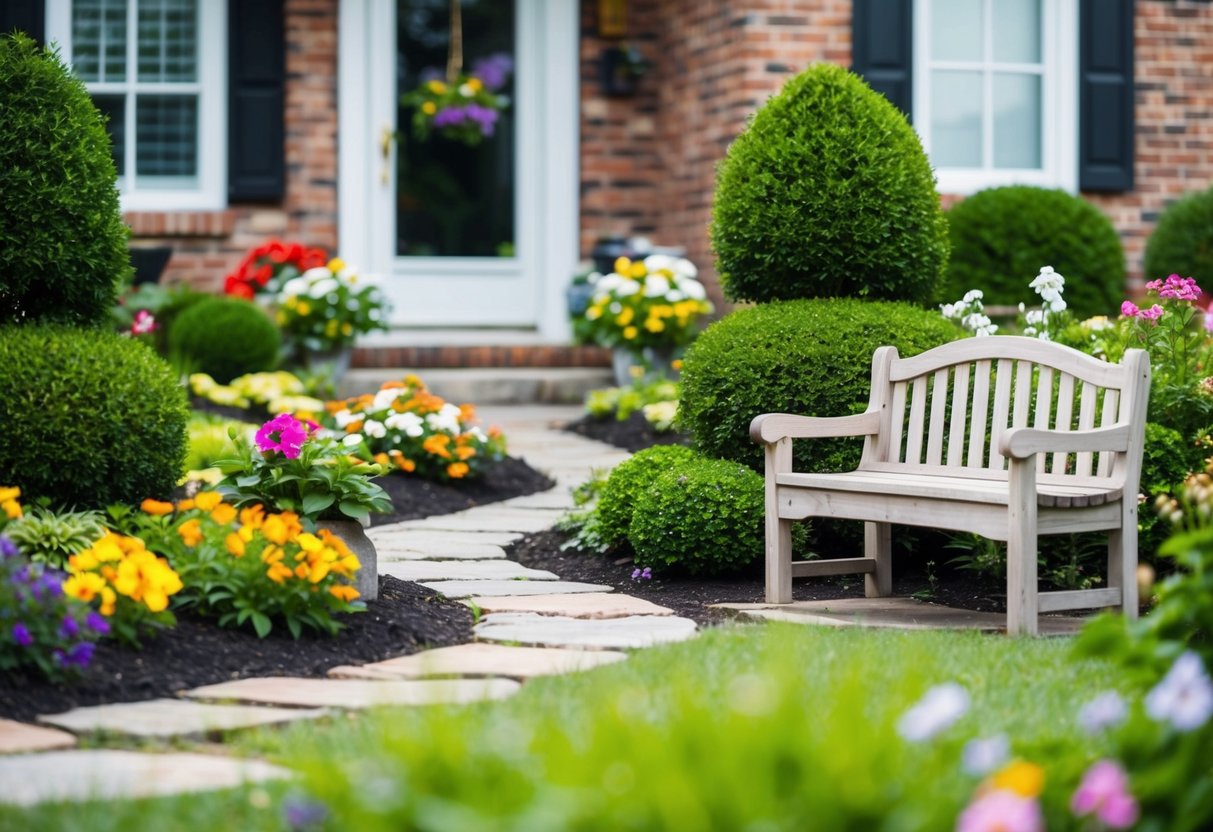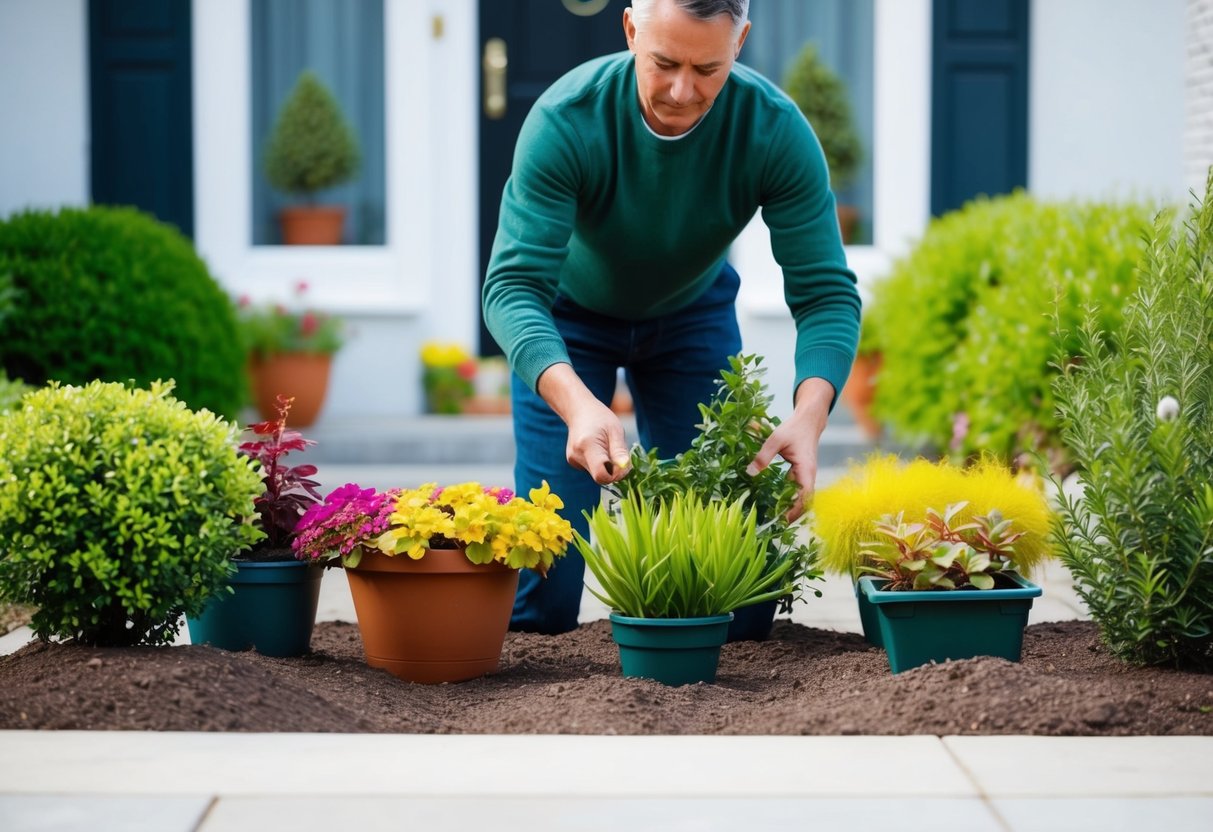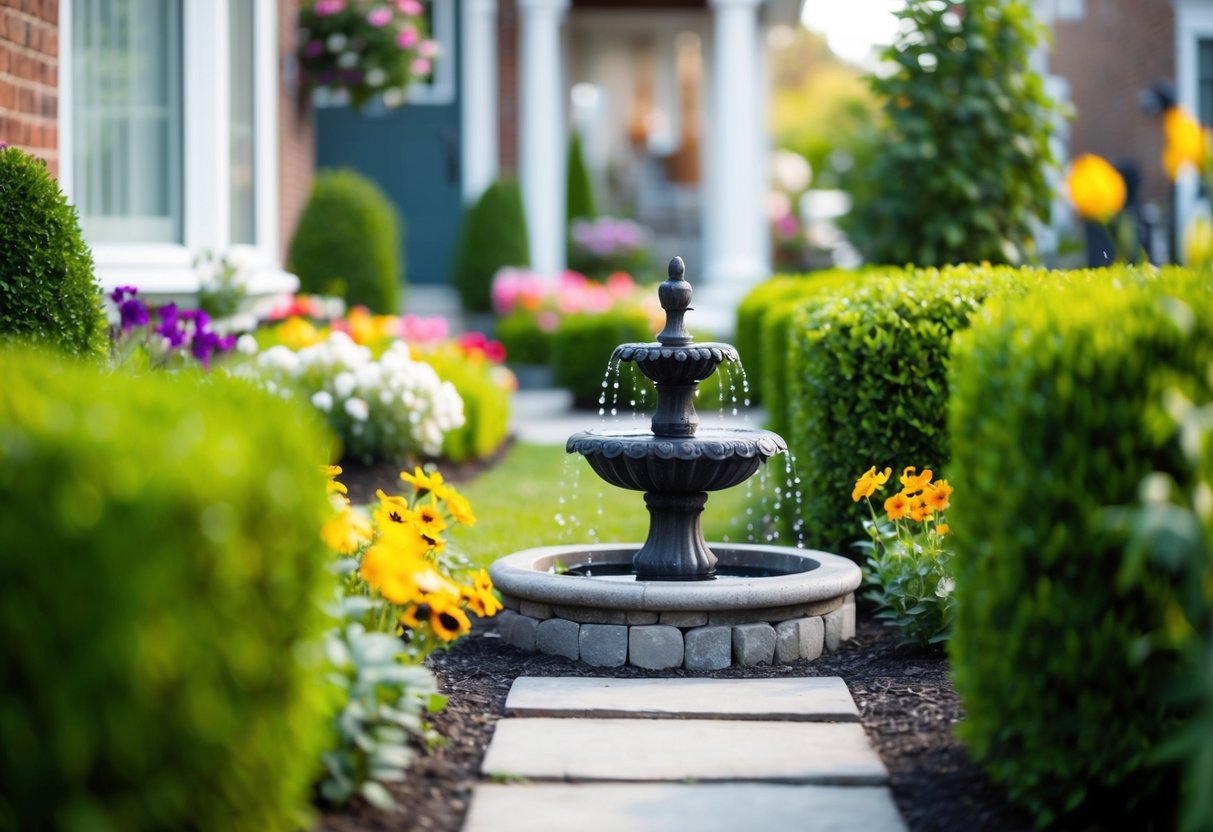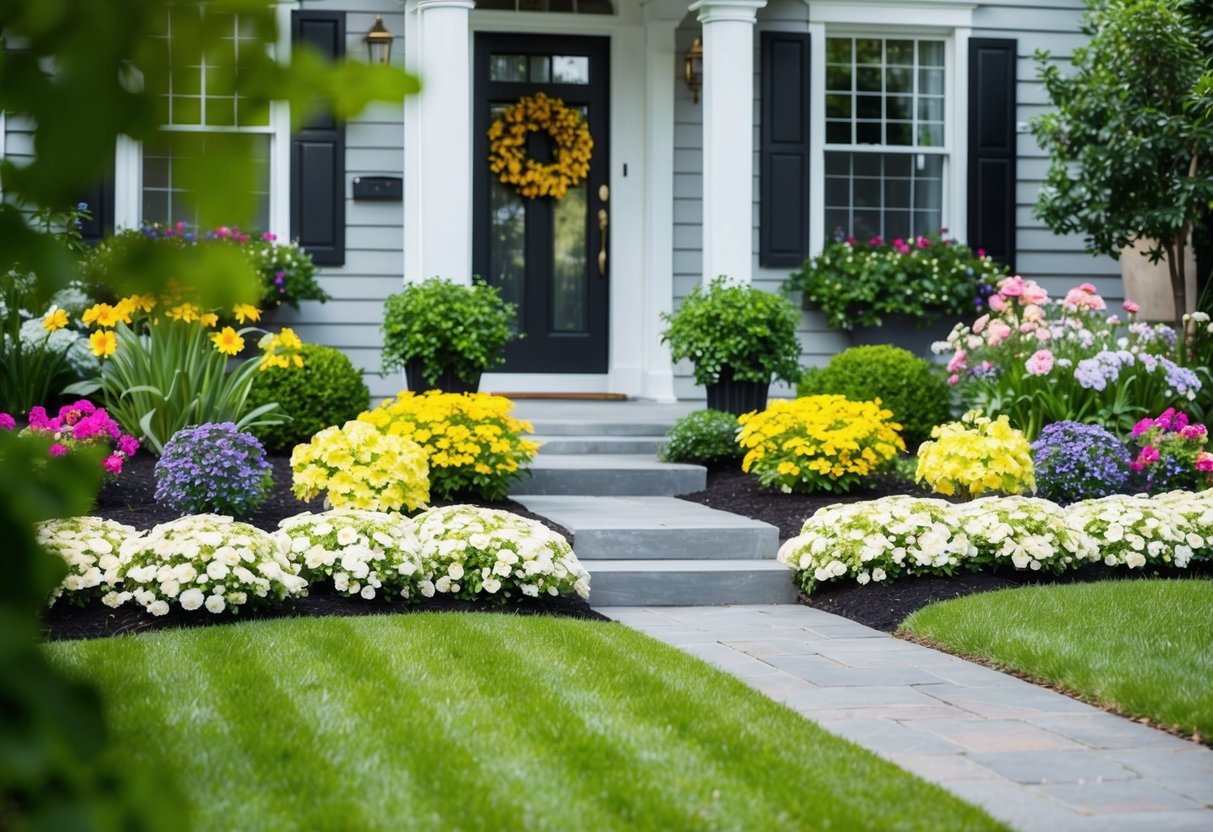How to Make a Small Front Garden Look Nice: Easy Tips for Charm
Transforming a small front garden into an inviting and beautiful space can be easier than you think. Start by using vertical space, like planting in hanging baskets, to add color and texture without overcrowding the ground. This allows you to enjoy a burst of floral beauty at eye level while keeping the area uncluttered.

Consider incorporating large containers to add structure and interest. These can hold striking plants and flowers, turning heads without taking up much room. Selecting a single type of flower in a uniform color can create a big impression and give a neat, cohesive look to the space.
Don’t forget about adding light touches. Painting the front door and porch in light or neutral colors can reflect light, making the area feel larger. Small seating areas can also offer a welcoming touch and utilize your space effectively.
Planning Your Small Front Garden

Creating a charming small front garden involves understanding your available space and choosing a style that complements your home. Simple steps in assessing your space and picking the right garden style make a big difference.
Assessing Your Space
Begin by observing your small front yard. Take notes on the amount of sunlight different spots receive during the day. Some areas might be shaded by your house or trees, while others may get full sun. This will help in selecting plants that will thrive.
Next, measure the space carefully. Note any existing features like pathways, porches, or trees. Sketch a rough layout to visualize where you might add plants, containers, or other elements like seating. Think about how you want to use the space, whether for relaxation, curb appeal, or both.
Check the condition of the soil. You might need to enhance it with compost or other organic materials to support plant growth. Consider using raised beds or containers if the soil quality isn’t ideal. Understand potential challenges such as drainage issues or limited sunlight, and develop a strategy to manage them.
Choosing a Garden Style
Select a garden style that suits both your personal taste and the architecture of your home. For a classic look, consider a cottage garden with a mix of flowering plants and shrubs in various heights and colors. If you prefer something modern, opt for a minimalist approach using clean lines and limited plant types.
Incorporate small front garden ideas like hanging baskets or large containers to maximize space without overcrowding. This adds depth and layers to your garden. Think about color schemes that complement your house’s exterior, and add elements like rocks or small water features for extra interest.
Create a balanced look by mixing textures and forms. Use plants with varied leaf shapes and colors. Structure your garden with taller plants along the edges or at the back, and smaller ones in the front. This provides a tiered effect that makes the space feel larger and more inviting.
Creating Curbside Appeal

Boosting your home’s curb appeal involves using smart landscaping techniques and focusing on design elements that enhance the overall look. Thoughtful use of lighting, plants, and focal points can transform your front yard into a space that feels inviting and beautiful.
The Importance of Focal Points
Creating a focal point is crucial in garden design. It draws the eye and gives your garden shape and structure. You might focus on a striking tree, a water feature, or a sculpture that stands out. Ornamental grasses can add texture and height to your space, making them great focal points in small gardens.
Consider using colorful flowers or shrubs near your front door, such as azaleas or rhododendrons, to catch attention and create a welcoming look. You can also try adding large boulders or interesting stones to blend nature and art in your yard. This adds a unique touch and helps balance your design.
Front Yard Landscaping Basics
Getting the basics right is key to achieving curb appeal. Start by selecting plants that will thrive in your climate and complement your home’s exterior. Use a variety of plant heights and textures to add interest, and include evergreen plants to ensure your garden looks vibrant year-round.
Incorporate landscape lighting to highlight paths or specific features at night, making the space feel cozy and well-kept. Window boxes and planters are excellent choices for adding bursts of color to your porch and walkways. They can add personality and charm to your entryway, making your garden look even more inviting. Wherever possible, choose low-maintenance plants and materials to ensure your front yard stays beautiful with minimal upkeep.
Selecting Plants and Shrubs

When planning your small front garden, choosing the right plants and shrubs helps create a welcoming vibe. You can use evergreens and colorful flowering shrubs to provide year-round interest. Ground covers and climbing plants can add lush layers and vertical elements without taking up much space.
Choosing Evergreens and Flowering Shrubs
Evergreens are a great choice because they maintain their foliage all year. Boxwoods and coniferous shrubs are excellent options for lining pathways and creating structure. For a splash of color, you might consider flowering shrubs like azaleas or hydrangeas. These shrubs offer beautiful blooms that can be the highlight of your garden.
Try mixing different types to achieve a balanced look. Evergreen shrubs provide a backdrop, while flowering varieties introduce color and interest. For a low-maintenance option, select shrubs that are adapted to your climate. Boxwoods, for instance, are perfect for areas with mild winters and will hold their shape well.
Incorporating Ground Covers and Climbing Plants
Ground covers like creeping thyme or euphorbia add texture and interest at the soil level. They fill gaps and help suppress weeds, making maintenance easier. Choose ground covers with varied foliage for visual appeal.
Climbing plants can make use of vertical spaces to add depth. Climbing roses or clematis are ideal for adding color without overwhelming the limited area. Install a trellis or use existing structures like fences to support these plants.
Incorporating both ground covers and climbing plants can create a layered effect in your garden. They maximize space while enhancing the overall aesthetic, making your garden feel lush and full.
Garden Features and Decor

Enhancing a small front garden can make a big difference in its appearance and charm. By incorporating planters and creating defined paths, you can add personality while maximizing the space effectively.
Adding Planters and Potted Plants
Using planters and potted plants is a fantastic way to introduce color and variety. Choose a mix of large and small containers to create visual interest. Hanging baskets and window boxes are also great for adding height and layers.
Container gardening ideas can inspire you to mix flowers, herbs, and even small ornamental trees. Try using bold-colored pots to make them stand out. Remember, potted plants can be easily rearranged to refresh your garden’s look as the seasons change.
Installing Garden Paths and Paving
Garden paths not only look charming but also guide visitors through your garden. A winding path can make a small area feel larger. Opt for materials like gravel, stone, or bricks, each offering a distinct style.
Exploring various paving ideas can add texture and character. Consider using contrasting colors or patterns to add interest. Garden paths also help divide different sections, such as separating flower beds from sitting areas, ensuring every part of your garden is easily accessible.
Maintaining Your Front Garden

Keeping your front garden beautiful involves regular upkeep and occasional updates. Focus on routine care to ensure plants stay healthy and your space remains inviting. Adjust your efforts seasonally to optimize growth and vibrancy.
Regular Care for a Lasting Impression
Consistent care keeps your garden welcoming. Begin with daily or weekly watering, depending on plant needs and weather. Topiary requires precise trimming to maintain its shape, adding elegance to your garden. Keep an eye on weeds; they can quickly take over flower beds if not removed promptly.
Pruning is vital for both hydrangea bushes and other blooming plants. This encourages healthy growth and more flowers. If you have any container gardening, check for pests that can thrive in that environment. A balanced application of fertilizer supports robust plant health, ensuring your plants thrive.
Regularly rake and clear fallen leaves to keep pathways clear. This not only improves appearance but also prevents pests. A tidy walkway creates an immediate inviting feel, enhancing the overall aesthetics of your front yard.
Seasonal Updates and Refreshes
Each season demands different care strategies. In spring, plant new flowers in your flower beds to refresh color and variety. Consider adding summer-loving plants to fill in gaps left by those that thrived in cooler months. Hydrangea bushes need particular attention in spring as they prepare for a strong bloom season.
In summer, ensure that your container garden is adequately hydrated since pots dry out more quickly. Move pots around to ensure they get appropriate sunlight. As fall arrives, cut back any plants that won’t survive winter. Replace them with chilly-weather-friendly options like evergreens or decorative shrubs.
Winter maintenance focuses on protecting plants from frost. Consider wrapping sensitive species with burlap or moving containers indoors. Adjusting plant care with the seasons keeps your garden looking fresh and lively all year.







